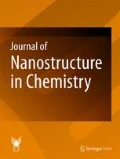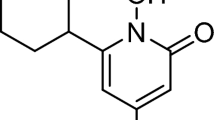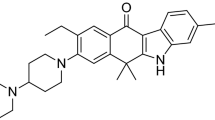Abstract
One of the main causes worldwide is cancer. One of the important approaches to cancer treatment is the use of chemotherapy drugs but nowadays, the use of smart drugs by researchers is being used to treat cancer. The most important carrier of drug delivery to cells is the use of carbon nanotubes. In this research, the possibility of formation of interactions between carbon nanotube and Gemcitabine anticancer drug is investigated with M06/6-311G level. The results obtained by M06/6-311G level indicate adsorption of the drug into nanotubes is physical. The obtained interaction energy and obtained bonding energy values with standard method were corrected by basis set superposition error (BSSE) on the same level of theory. The binding energy in the solvent phase is lower than the gas phase. Hence, the stability of the studied reaction increases in solvent phase with regard to the gas phase. The NBO analysis shows which the transfer electron can occur from the lone pair of Nitrogen (donor atom) in the Gemcitabine to the \( \sigma^{ * } \) orbital of the carbon atoms (acceptor atoms) in single-walled carbon nanotube. As well as the data of the atoms in a molecule (AIM) theory showed which the N17–C61 bond is a partial covalent bond.
Graphic abstract













Similar content being viewed by others
References
Guo, Z., Sadler, P.J., Tsang, S.C.: Immobilization and visualization of DNA and proteins on carbon nanotubes. Adv. Mater. 10, 701–703 (1998)
Guo, Q., Shen, X.T., Li, Y.Y., Xu, S.Q.: Carbon nanotubes-based drug delivery to cancer and brain. Curr. Med. Sci. 37, 635–641 (2017)
Alshehri, R., Ilyas, A.M., Hasan, A., Arnaout, A., Ahmed, F., Memic, A.: Carbon nanotubes in biomedical applications: factors, mechanisms, and remedies of toxicity. J. Med. Chem. 59, 8149–8167 (2016)
He, H., Pham-Huy, L.A., Dramou, P., Xiao, D.L., Zuo, P.L., Pham-Huy, C.: Carbon nanotubes: applications in pharmacy and medicine. Biomed. Res. Int. (2013). https://doi.org/10.1155/2013/578290
Iijima, S., Ichihashi, T.: Single-shell carbon nanotubes of 1-nm diameter. Nature. 363, 603–605 (1993)
Ramalingame, R., Lakshmanan, A., Muller, F., Thomas, U., Kanoun, O.: Highly sensitive capacitive pressure sensors for robotic applications based on carbon nanotubes and PDMS polymer nanocomposite. J. Sens. Sens. Syst. 8, 87–94 (2019)
Lin, J.N., Yeh, C.Y., Pan, Y.N., Lin, M.C., Fan, F.Y.: Effect of carbon nanotubes on in vitro cellular responses for bioglass application. Mater. Lett. 235, 141–143 (2019)
Filatzikioti, A., Glezos, N., Kantarelou, V., Kyriakis, A., Pilatos, G., Romanos, G., Speliotis, T., Stathopoulou, D.J.: Carbon nanotube Schottky type photodetectors for UV applications. Solid State Electron. Lett. 151, 27–35 (2019)
Muhulet, A., Miculescu, F., Voicu, S.I., Schutt, F., Thakur, V.K., Mishra, Y.K.: Fundamentals and scopes of doped carbon nanotubes towards energy and biosensing applications. Mater. Today Energy. 9, 154–186 (2018)
Abdulla, S., Mathew, T.L., Pullithadathil, B.: Highly sensitive, room temperature gas sensor based on polyaniline-multiwalled carbon nanotubes (PANI/MWCNTs) nanocomposite for trace-level ammonia detection. Sens. Actuators B-Chem. 221, 1523–1534 (2015)
Yengejeh, S.I., Kazemi, S.A.: Ochsner, A: carbon nanotubes as reinforcement in composites: A review of the analytical, numerical and experimental approaches. Comput. Mater. Sci. 136, 85–101 (2017)
Kurban, M.: Electronic structure, optical and structural properties of Si, Ni, B and N-doped a carbon nanotube: DFT study. Optik. 172, 295–301 (2018)
Zhu, W., Huang, H., Dong, Y., Han, C., Sui, X., Jian, B.: Multi-walled carbon nanotube-based systems for improving the controlled release of insoluble drug dipyridamole. Exp Ther Med. 17(6), 4610–4616 (2019)
Ihsan, U.: Carbon nanotube membranes for water purification: developments, challenges, and prospects for the future. Sep. Purif. Technol. 209, 307–337 (2019)
Muz, I., Kurban, M.: A comprehensive study on electronic structure and optical properties of carbon nanotubes with doped B, Al, Ga, Si, Ge, N, and P and as and different diameters. J. Alloys Compd. 802, 25–35 (2019)
Zhu, W., Huang, H., Dong, Y., Han, C., Sui, X., Jian, B.: Multi-walled carbon nanotube-based systems for improving the controlled release of insoluble drug dipyridamole. Exp. Ther. Med. 17, 4610–4616 (2019)
Venkataraman, A., Amadi, E.V., Chen, Y., Papadopoulos, C.: Carbon nanotube Assembly and Integration for Applications. Nanoscale Res. Lett. 14(220), 2–47 (2019)
Alarifi, I.M.: Investigation the conductivity of carbon fiber composites focusing on measurement techniques under dynamic and static loads. J Mater Res Technol. 8(5), 4863–4893 (2019)
Wongwiriyapan, W., Inoue, S., Honda, S., Katayama, M.: Adsorption Kinetics of NO2 on Single-Walled Carbon Nanotube Thin-Film Sensor. Jpn J Appl Phys. 47(10), 8145–8147 (2008)
Zhang, X.W., Ma, Y.X., Sun, Y., Coa, Y.B., Li, Q., Xu, C.A.: Gemcitabine in combination with a second cytotoxic agent in the first-line treatment of locally advanced or metastatic pancreatic cancer: a systematic review and meta-analysis. Target Oncol. 12(3), 309–321 (2017)
Mananghaya, M.R., Santos, G.N., Yu, D.: Hydrogen adsorption of Ti-decorated boron nitride nanotube: a density functional based tight binding molecular dynamics study. Adsorption. 24(7), 683–690 (2018)
Froudakis, G.E.: Hydrogen storage in nanotubes & nanostructures. Mater. Today 14(7–8), 324–328 (2011)
Alvarellos, M.L., Lamba, J., Sangkuhl, K., Thorn, C.F., Wang, L., Klein, D.J., Altman, R.B., Klein, T.E.: PharmGKB summary: gemcitabine pathway: Pharmacogenet Genom. 24(11), 564–574 (2014)
Mini, E., Nobili, S., Caciagli, B., Landini, I., Mazzei, T.: Cellular pharmacology of gemcitabine. Ann. Oncol. 17(5), 7–12 (2006)
Cerqueira, N.M., Fernandes, P.A., Ramos, M.J.: Understanding ribonucleotide reductase inactivation by gemcitabine. Chem. Eur. 13(30), 8507–8515 (2007)
Saliev, T.: The Advances in biomedical applications of carbon nanotubes. C. 5 (2), 29 (2019). https://doi.org/10.3390/c5020029
Karelson, M., Tam, T., Zerner, M.C.: Multicavity reaction field method for the solvent effect description in flexible molecular systems. J. Phys. Chem. 97, 11901–11907 (1993)
Begum, S.S., Gour, N.K., Sonavane, U., Ray, S.K., Deka, R.C.: Computational studies of anti-cancer drug mediated by graphene and reaction mechanism of drug generated alkyl radical with guanine. J. Mol. Struct. 1196, 527–535 (2019)
Zare, K., Shadmani, N.: Comparison of drug delivery systems: Nanotube and p-sulphonato calix [4] aren, by density functional theory. J. Nanostruct. Chem. 3(1), 72–77 (2013)
Zare, K., Shadmani, N., Pournamdari, E.: DFT/NBO study of nanotube and calixarene with anti-cancer drug. J. Nanostruct. Chem. 3(1), 75 (2013)
Zare, K., Najafi, F., Sadegh, H.R., Shahryari, G.R.: Studies of ab intio and Monte Carlo simulation on interaction of fluorouracil anticancer drug with carbon nanotube. J Nanostruct. Chem. 3(1), 71 (2013)
Kurban, M., Gunduz, B.: Electronic structure, optical and structural properties of organic 5, 5′-Dibromo-2, 2′-bithiophene. Optik 165, 370–379 (2018)
Zhao, Y., Truhlar, D.G.: The M06 suite of density functionals for main group thermochemistry, thermochemical kinetics, noncovalent interactions, excited states, and transition elements: two new functionals and systematic testing of four M06-class functionals and 12 other functionals. Theor. Chem. Acc. 120, 215–241 (2008)
Mananghaya, M.R., Santos, G.N., Yu, D.N.: Solubility of amide functionalized single wall carbon nanotubes: a quantum mechanical study. J. Mol. Liq. 242, 1208–1214 (2017)
Mananghaya, M.R., Santos, G.N., Yu, D.: Solubility of aminotriethylene glycol functionalized single wall carbon nanotubes: a density functional based tight binding molecular dynamics study. J. Comput. Chem. 40(8), 952–958 (2019)
Mehdizadeh, Kh, Giahi, M.: A DFT study on N–6–amino–hexylamide functionalized single–walled carbon nanotubes in interaction with silver ion in a gaseous environment. J Nanostructure Chem. 9, 39–51 (2019)
Greiner, W., Neise, L., Stöcker, H: Thermodynamics And Statistical Mechanics. Springer. (1995)
Zhao, Y., Huang, C., Kim, M., Wong, B.M., Léonard, F., Gopalan, P., Eriksson, M.A.: Functionalization of single-wall carbon nanotubes with chromophores of opposite internal dipole orientation. ACS Appl. Mater. Inter. 5(19), 9355–9361 (2013)
Huang, C., Wang, R.K., Wong, B.M., McGee, D.J., et al.: Spectroscopic Properties of Nanotube-Chromophore Hybrids. ACS Nano 5(10), 7767–7774 (2011)
Joo, Y., Brady, G.J., Shea, M.J., et al.: Isolation of pristine electronics grade semiconducting carbon nanotubes by switching the rigidity of the wrapping polymer backbone on demand. ACS Nano. 9(10), 10203–10213 (2015)
Acknowledgements
The authors would like to acknowledge the financial and scientific support from the Islamic Azad University, Roudehen branch.
Author information
Authors and Affiliations
Corresponding author
Ethics declarations
Competing interests
The author declares that she has no competing interests.
Additional information
Publisher's Note
Springer Nature remains neutral with regard to jurisdictional claims in published maps and institutional affiliations.
Rights and permissions
About this article
Cite this article
Najafi, F. Thermodynamic studies of carbon nanotube interaction with Gemcitabine anticancer drug: DFT calculations. J Nanostruct Chem 10, 227–242 (2020). https://doi.org/10.1007/s40097-020-00344-y
Received:
Accepted:
Published:
Issue Date:
DOI: https://doi.org/10.1007/s40097-020-00344-y




